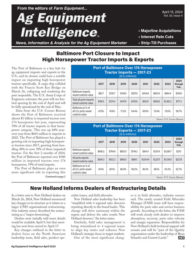Ag Equipment Data Points©
Items Tagged with 'Economic Research Service'
ARTICLES
USDA Announces Kansas City Region as the New Home for ERS and NIFA
Move puts ERS, NIFA closer to customers, expected to save nearly $300 million nominally.
Read More



